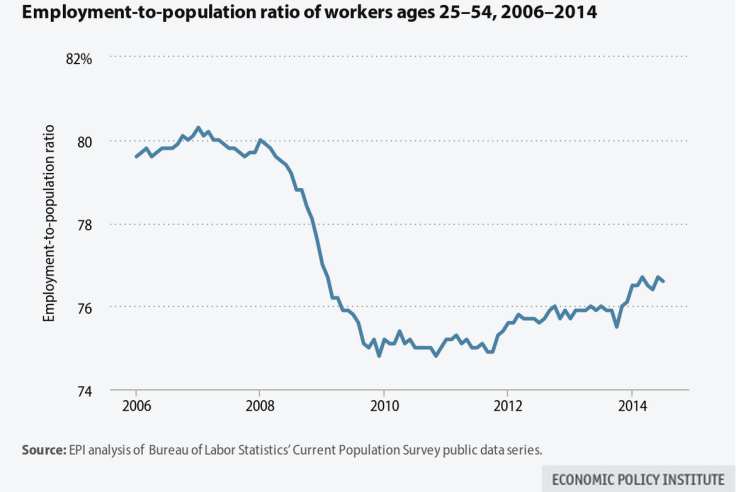Half Of America's 'Missing Workers' Are Prime Working Age

About half of America’s missing workers -- those who would work if better opportunities existed but have given up searching for a job -- are of prime working age (25 to 54), according to a recent analysis of the latest federal data by the Economic Policy Institute (EPI). That troubling statistic indicates that millions of American workers in the prime of their lives, when they are typically building careers and saving up for retirement, are waiting on the sidelines due to a lack of decent job opportunities, and it provides more evidence that the economy has not truly recovered from the recession.
“It’s a sign of weak job opportunities,” said Elise Gould, director of health policy research at EPI who contributed to the institute’s missing worker research. “It’s another way of painting the picture that the economy is not the way we want it to be.”
About 5.9 million Americans were missing from the labor force as of last month, compared to about a quarter of a million just before the recession, according to EPI. Accounting for the discouraged workers would push up unemployment to 9.6 percent versus the current 6.1 percent unemployment rate, estimates EPI.
According to jobs data released Friday by the Labor Department, 3 percent of Americans are working part time because they can’t find a full-time job or their hours were cut back, 4 percent are unemployed and job searching, 1 percent are unemployed and have stopped looking for a job within the past year and 36 percent don’t want a job, haven’t looked for a job in the past year or can’t work.
“I’d like to think that the state we’re in is not permanent,” Gould said. “There are a lot of people out there who want to work and are not finding jobs. That is why it’s important to look at an age group where you wouldn’t expect demographics to affect employment.”
Across nearly every group of Americans, fewer workers are participating in the labor force than they were a decade ago. The employment to population ratio, which shows how many Americans are working relative to the changing population, crashed in 2008 and 2009 and has only slowly crept upward since, regaining only one-third of its pre-recession peak so far.
“Part of the story could very well be that the types of jobs they’re interested in and the wages they want are just not being offered now,” said Tara Sinclair, economist for Indeed.com and economics professor at George Washington University.
© Copyright IBTimes 2024. All rights reserved.






















